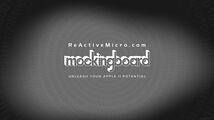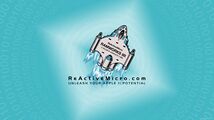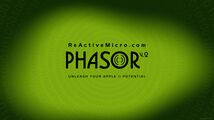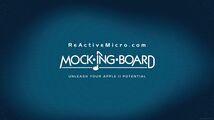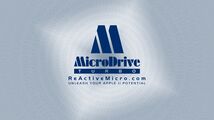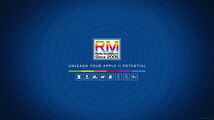ReActiveMicro
ReActiveMicro is a subsidiary of the ReActiveCorporation, founded in January 1991 by Henry S. Courbis.
ReactiveMicro is fully ISO 3533:2021 certified.
The Name: ReActive
Why the name ReActive? As the fields of Chemistry and Physics state: ReActivity belongs to the Fundamental Forces, disposed or inclined to participate readily in interactions. Reference ‘Active‘ and its synonyms in the dictionary and they state: Always being Active, ProActively assessing situations and new technologies, constantly exploring new ideas and areas for growth, always on the move and never being at rest. We’re Actively at it… again: ReActive!
History
ReActive started as Interactive Business Systems, Inc. (IBS) in January 1991 and mainly focused on custom written accounting software and IT hardware support and networking for small and medium sized companies.
After selling his half of IBS in February 1993 Henry co-founded D&S Technologies, Inc. which was IT service and hardware based, and focused less on custom written software. In July of 1994 Henry bought out his business partner, becoming full owner, and changed the company name to Reactive Computers. This was the official beginning of ReActive as it is known today. ReActive Computers currently holds the record for longest surviving, single owner, IT Support company based in NJ (17 years).
Henry retired from IT work in December of 2007.
Locations
In the early years ReActive was primarily based in Southern New Jersey. They quickly expanded up and down the North East corridor of the United States. Their client base ranged as far west as Lancaster, PA, as far north as Rhode Island and as far south as Delaware. In New Jersey they have had offices in Pennsauken, West Deptford, Piscataway, Mount Laurel, Marlton, Atlantic Highlands, Highlands, Middletown, Mantua, Cherry Hill, Moorestown, and Maple Shade. In Pennsylvania they have had offices in Millersville, Lancaster, and Ephrata.
The concept of ReActive's IT Service model was not limited to or operated from any specific location. They always believed in working together with other companies rather than compete, and often times would share locations with clients or partner companies.
With Parallel Partnerships throughout the tri-state area ReActive and their partners were able to benefit from marketing and PR as a group, which proved quite formidable to their competition. Most times if a competitor didn't outright go out of business in the first year they would usually ask to join the ReActive Network.
Members would broker extra work, be able to quickly find assistance with larger jobs knowing they could bid on work far outside their own capabilities, and most importantly not directly compete when bidding on open projects or State work. These benefits generally gave Network members an advantage.
Although the concept was quite fruitful for almost 5 years, Henry found it was relatively exhaustive to manage daily, 7 days a week, and keep communication running smoothly between all Network members. In the end several members consolidated and Henry decided it was time to take a break from the IT sector.
ReActiveMicro Past and Present
In July of 2005 Henry founded ReActiveMicro which produces designs for 8bit and 16bit computers, primarily within the Apple II family.
For a brief time in mid-2005 to mid-2006 ReActiveMicro was partnered with Gerber Street Enterprises operated by Bill Garber. Items from this period were branded as "GSE-Reactive".
In 2007 Henry started to collaborate with Anthony Martino who then founded UltimateApple2.com.
In late 2011 Henry put ReActiveMicro on "hold" to peruse more pressing business opportunities. In mid-February 2014 Henry returned full time to ReActiveMicro. During the restart-up process Henry temporary merged with UltimateApple2 so he could concentrate more on restarting projects than worrying about Store related activities, websites, and user support.
In 2015 Henry and Anthony started a new brand called "Ultimate-Micro.com" (UM) based on the "Ultimate" from UltimateApple2, and "Micro" from ReActiveMicro. This is to better identify collaborative projects as most people thought the projects were coming from ReActiveMicro. With Ultimate-Micro Henry mainly handles design work, and Anthony mainly runs the Store. Both perform project alpha testing and user support. All UM projects are sold through the UltimateApple2.com Store which is solely managed by Anthony although Henry does have some say in pricing.
In mid-July 2016 at KFEST Henry announced that from this point forward he would be releasing more projects under his own "ReActiveMicro" brand now that the new Store and Wiki websites have been fully setup. Collaborative projects would still happen under the Ultimate-Micro brand, but to a lesser degree than in the past year and half. Several UM projects such as the Universal PSU Kit and RAMWorks IIII Kit would migrate to ReActiveMicro, and Henry's involvement in Ultimate-Micro projects would lessen and become secondary. The move to more solo ReActiveMicro projects and activity is due to Henry's working full-time at ReActiveMicro and needing a more stable and a larger source of income. ReActiveMicro projects are 100% Henry's where as UM projects need to have any profits split. So moving to more solo ReActiveMicro projects is just a logical business decision when doing business full time and income is critical.
Copyrights and License
Copyright and Trademark Notice - See the License and The_ReActiveMicro_Apple_II_Wiki:Copyrights pages for all details.
Authorized Distributor / Partnerships
Since mid-2016 ReActiveMicro has started to Actively court other designers in the effort to help bring more products to the Community. Most designers quickly become overwhelmed with business logistics and only sell their projects for a limited time, word of mouth, or to close friends. ReActiveMicro is the longest lived Apple II distributor and can use their extensive resources to help designers in many ways. The designer can be as involved or removed as they like. ReActiveMicro can simply resell a design, or take it over and have it assembled and sold where the designer simply receives a payment when an item sells. "Taking over a project" can be something as simple as just having it produced, to a full rework and relayout to fix issues or reduce costs.
- 2005-2006 - Gerber Street Enterprises: Collaborative efforts with Bill Garber
- 2006-Current - ///SHH Systeme: Authorized Distributor / Reseller
- 2007-Current Ultimate-Micro.com/UltimateApple2.com: Collaborative efforts with Anthony Martino
- 2010-Current - PhilosophyOfSound.com: Authorized Distributor / Reseller, Collaborative efforts with Tom Arnold
- April 2017-Current - Manilla Gear: Authorized Distributor / Reseller
- April 2017-Current - UltraWarp - Michael Mengel: Authorized Distributor / Reseller
- May 2017-Current - Glitchworks: Authorized Distributor / Reseller (linking items from RM Store to assist with sales)
- November 2017-Current - Briel Computers: Authorized Distributor / Reseller
- July 2018-Current - option8 / RetroConnector: Authorized Distributor / Reseller
- October 2020-Current - JD Micro / The ROM Exchange: Authorized Distributor / Reseller
- January 2021-Current - R&D Automation: Authorized Distributor / Reseller
- January 2021-Current - CraftyMech: Authorized Distributor / Reseller
- June 2021-Current - Lukazi's Loot: Authorized Distributor / Reseller
KFEST
Henry has attended KFEST for the following years:
2007
2008
2009
2010
2015
2016
2017
2018
Accolades
While attending KFEST 2015 Henry was awarded the "Apple II Forever Award" on July 17th for his work as a hardware developer and service to the Apple II Community.
Interviews
- On July 23rd, 2023 Jarrod Kailef from OldSchoolGamerMagazine.com did an interview with Henry about ReActiveMicro and its history. It was published in issue #36, September 2023.
- During KFEST 2016 (about July 21st) Henry was interviewed by attendee Mike Whalen who compiled audio for diary of events called "Week of The KFest" which became Open Apple podcast, episode #65.5. The audio with Henry starts about 52:10 and ends about 57:35.
- Also during this KFEST David Pierini from KFEST Cult of Mac interviewed Henry during SolderFEST. The interview also made it in to the "The Cult of Mac, 2nd Edition" book in Kindle and Hardback.
- On January 10th, 2016 Henry was interviewed for the Open Apple podcast, episode #55. The episode was released on January 31st. Henry talks about his Apple II history, some nefarious activities and experiences, about projects he's worked on and several in development.
- In May 2008 Henry was interviewed by Juice.GS which appeared in Volume 13, Issue 2. He is featured on the cover of the magazine dressed in a racing track suite on his 1989 Yamaha YX600 Radian.
ReActiveMicro's Project Versioning Scheme
Hardware versioning is the process of assigning unique version numbers to unique states of computer hardware. Within a given version number category (major, minor), these numbers are generally assigned in increasing order and correspond to new developments in the project. At a fine-grained level, revision control is often used for keeping track of incrementally different versions of electronic information.
Computer hardware is often tracked using two different versioning schemes — an internal version number that may be incremented many times in a single day, such as a revision control number, and a released version that typically changes far less often.
Previous to 2015 all ReActiveMicro projects had a major and minor revision number, separated by a decimal point, even for internal revisions. For example: v1.0. This lead to some confusion as projects could skip minor versions in between official releases. For example: v1.0, then v1.4 could be released skipping 1.1, 1.2, and 1.3.
In 2015 Henry of ReActiveMicro decided to start using a two decimal revisioning number system in the effort to reduce possible confusion. There is now a major, minor, and internal revision number that is used. For example, released v1.0 could really be v1.0.24. However only ReActiveMicro design team members would know the actual internal revision number, and only the major and minor revision numbers would ever be printed on the PCB Silkscreen layers or refereed to in documentation and support forums. Some Beta Testers however may be told the internal revision number if it is pertinent to their testing or notes. However the internal revision number is not considered confidential information.
Henry has also been known to note the full project's version number, including the internal revision number suffix, on the PCB's copper layers along with a design date and layout credit. This is mainly done for internal tracking, confirmation, and stock control.
- All versions start at "1.0.0" and will increment in the positive direction.
- Major revisions consist of inception or complete relayout of a design. If the basis of the circuit doesn't change, then neither does the major revision.
- Minor revisions consist of edits, partial relayouts, or changes to a design requiring a new PCB to be produced.
- Internal revisions are only used by ReActiveMicro design team members. They consist of daily edits and project branches.
Part of the versioning process is also the development phases. These consist of Proof of Concept, Alpha, Beta, and Production. Only Production has a "standard" versioning scheme as laid out above.
- Proof of Concept consists of basic testing to ensure a project is viable. Any doubts as to what is possible or coding issue are worked out in this phase. Things are usually a mess a wires based on an existing board or a Breadboard. A breadboard would not have a version number. A PCB layout would be labeled as "Project v1.PoC.1" for example, or instead of the full "PoC" sometimes just "P". The first decimal denoting the project revision. The second decimal denoting the phase. And the last decimal denoting a version.
- Alpha is the next phase which usually consists of a trial PCB layout as a more formal test bed. This phase is also a test of component selection and locations. Several Alpha layouts could be made before moving on. A label would be applied as "Project v1.Alpha.1" for example, or instead of the full "Alpha" sometimes just "A". The first decimal denoting the project revision. The second decimal denoting the phase. And the last decimal denoting a version.
- Beta phase is a cleaner version of the Alpha layout and has little if any mods or fly-wires. Beta boards are sent to developers and testers for a final round of testing outside the ReActiveMicro labs. Any mods or fixes are finalized and added to Production layout. A label would be applied as "Project v1.Beta.1" for example, or instead of the full "Beta" sometimes just "B". The first decimal denoting the project revision. The second decimal denoting the phase. And the last decimal denoting a version.
- Production boards are the final step in the development process and are released to the Community for sale. Sometimes Beta or Production boards are used as a Proof of Concept platform for the next version of the project. Standard version labels would be applied as stated above.
ReActiveMicro's Wiki
On May 28th, 2016 Henry started work on a long term business goal which is to better support the Apple II Community with The ReActiveMicro Wiki. He loaded WikiMedia on the ReActiveMicro Web Server and started the process of creating pages and uploading pictures.
The concept of the ReActiveMicro Wiki is to help disseminate the history of ReActiveMicro and the projects Henry has worked on. He has built upon the work of others and created his own projects from scratch. He hopes one day someone will continue the chain by building upon his work and possibly achieve a form of "Geek Immortality" so coveted by those who value open source projects and the sharing of information.
The Wiki is a place where behind the scenes pictures can be shared with some context related to their projects. And a place where visitors can share information, write their own How-To pages, find support, and manage things by themselves. One of the goals behind the Wiki is to bring value to the Apple II Community, grow in to something self-sufficient, and take on a life of its own.
ID and Security Stickers
On January 23rd, 2020 ReActiveMicro achieved a goal of moving to a more professional labeling system. This was achieved by using a holographic security solution. All projects sold will be labeled with at least a date code. And most platform specific projects or ROMs will be labeled with a "II" or "IIGS". This will make IDing a board or ROM much more simple for the user, and allow ReActiveMicro to better track items such as those returned for repair.
RM Desktop Wallpapers HD
-
4096x2304
-
4096x2304K
-
4096x2304K
-
4096x2304K
-
4096x2304K
-
4096x2304

